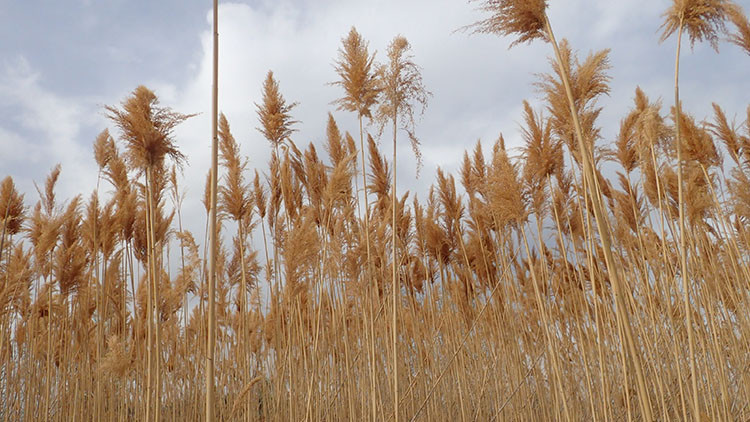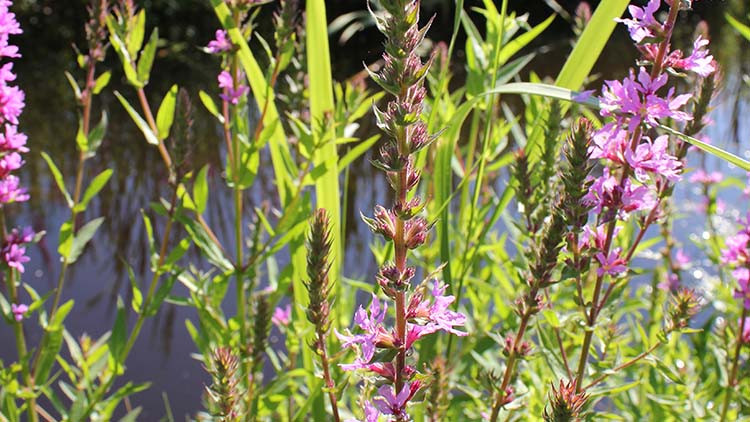Introduction
Invasive aquatic plants are non-native plant species introduced into aquatic habitats. As these plants rapidly reproduce, they can reduce the habitat of native plant species, threatening fish, insect and animal species in turn, and disrupting the overall biological diversity of ecosystems. Invasive aquatic plants can also affect water quality and interfere with recreational opportunities.
Common invasive aquatic plant species

Eurasian watermilfoil can out shade native plants and reduce water oxygen levels.

Flowering rush (Butomus umbellatus) can reduce irrigation water availability and impede aquatic activities like boating or swimming.

Pale yellow iris is a poisonous invasive plant that can have serious impacts on wetlands and watercourses.

Even with limited distribution, Phragmites can outcompete native plants in locations where it takes hold.

Stands of purple loosestrife can disrupt water quantity and quality, and negatively impact aquatic habitats.
Help stop the spread of invasive plants
Report aquatic invasive species:
- Phone: 1-855-336-2628 (BOAT)
- Online: EDDMapS
Learn more about identifying and preventing invasive aquatic plants:
- List of prohibited species
- Aquatic Invasive Species Pocket Guide
- ALMS Field Guide to Aquatic Plants
- Invasive Plants (Alberta Invasive Species Council)
Spread the word about the threats invasive plants pose:
Back to
Overview
